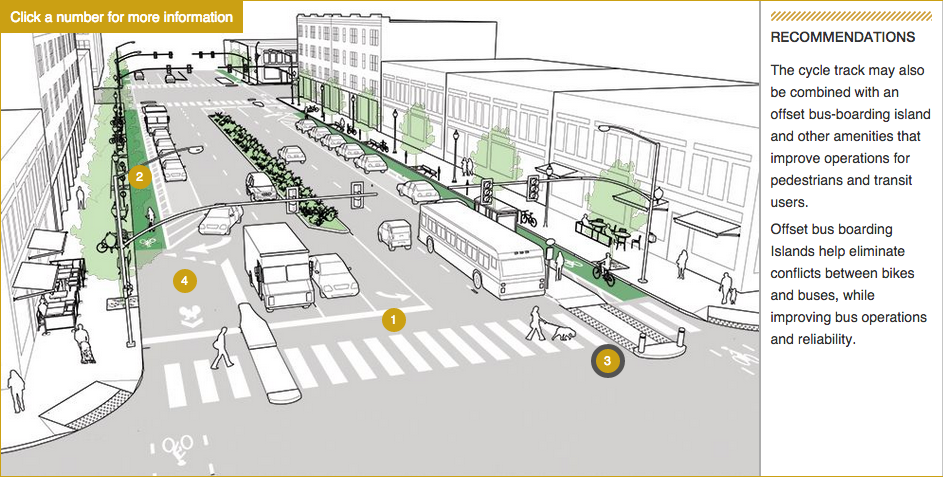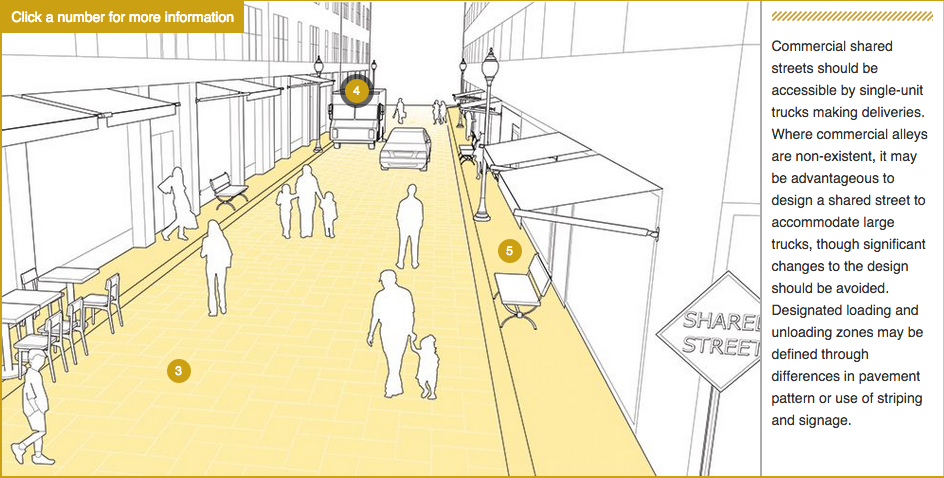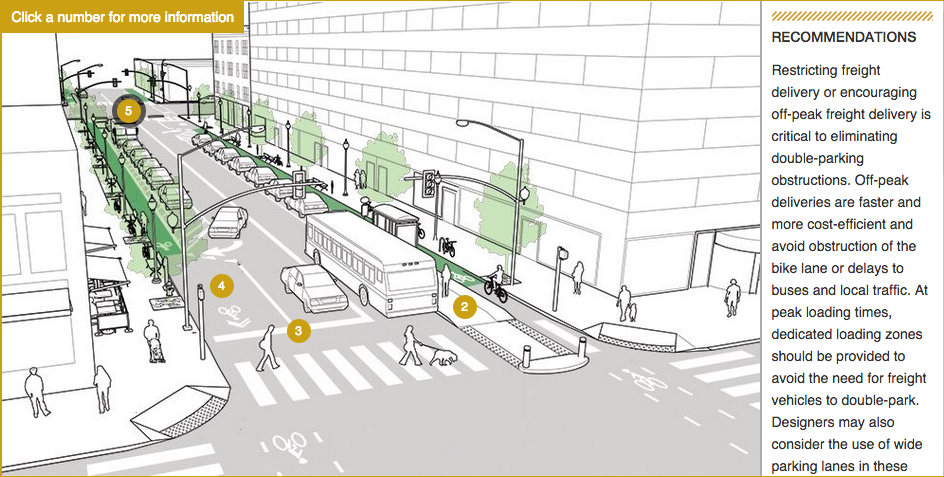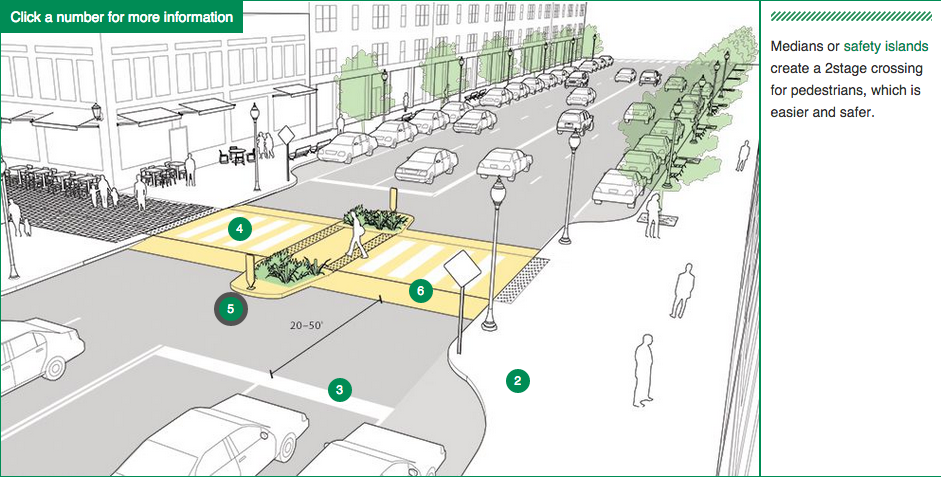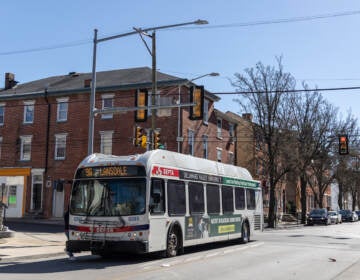Live-blog: The high stakes battle of the urban street design manuals
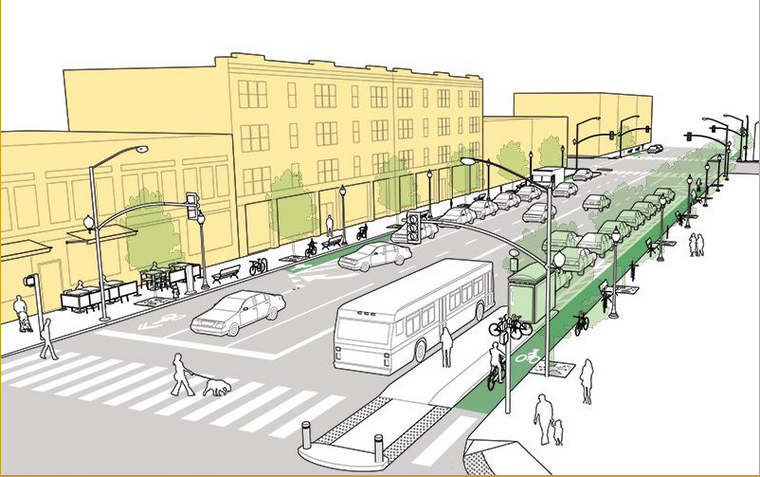
Should cities be consulting highway design manuals for advice on designing city streets? The National Association of City Transportation Officials (NACTO) says no, and they’re promoting an alternative manual – the Urban Street Design Guide – which they argue is a better facilitator of pedestrian safety and mobility in urban settings.
It all sounds incredibly boring, but the manuals that city and state transportation planners reach for in deciding how to design city streets carry important political implications for all kinds of issues, including transit and bike ridership, pedestrian safety, public health, air quality, and so much more.
We dove into this debate in a previous post on the “level of service” concept, but the basic shape of the issue is that many of the street engineering and policy orthodoxies of today are derived from the Highway Capacity Manual and AASHTO’s Green Book – documents that are first and foremost highway design manuals, primarily concerned with “the operational efficiency, comfort, safety, and convenience of the motorist” (a direct quote from the Green Book), with the pedestrian experience as kind of an afterthought. Quoth the Green Book:
“Many pedestrians consider themselves outside the law in traffic matters, and in many cases pedestrian regulations are not fully enforced. This makes it difficult to design a facility for efficient pedestrian movements.”
NACTO believes that the difficulty of designing for pedestrian safety shouldn’t be an excuse not to try, said Corinne Kisner, Program Manager for NACTO’s Designing Cities Initiative, at a panel on the USDG yesterday. Here’s a useful summary of the six basic values and principles underlying their alternative approach:
1. Streets are public spaces. “They should be conceived, analyzed, evaluated, and designed as public spaces, with human-scaled design and amenities. Cities also are recognizing that streets are one of their greatest assets. A tremendous amount of land is covered by streets in our cities. And so streets should be judged by how much they can attract foot traffic and vibrant city life as much as their ability to move vehicles through quickly.”
2. Great streets are great for business. “Streets are an economic asset as much as they are a functional space for mobility. Well-designed streets are generating higher revenues for businesses and homeowners, and a good example of that is NYC’s Measuring the Streets report which came out last year and really dives into the economic impact of well-designed streets” which reported increases in business sales, and decreases in commercial corridor vacancies after protected pedestrian, bicycle, and bus infrastructure were installed.
WHYY is your source for fact-based, in-depth journalism and information. As a nonprofit organization, we rely on financial support from readers like you. Please give today.



